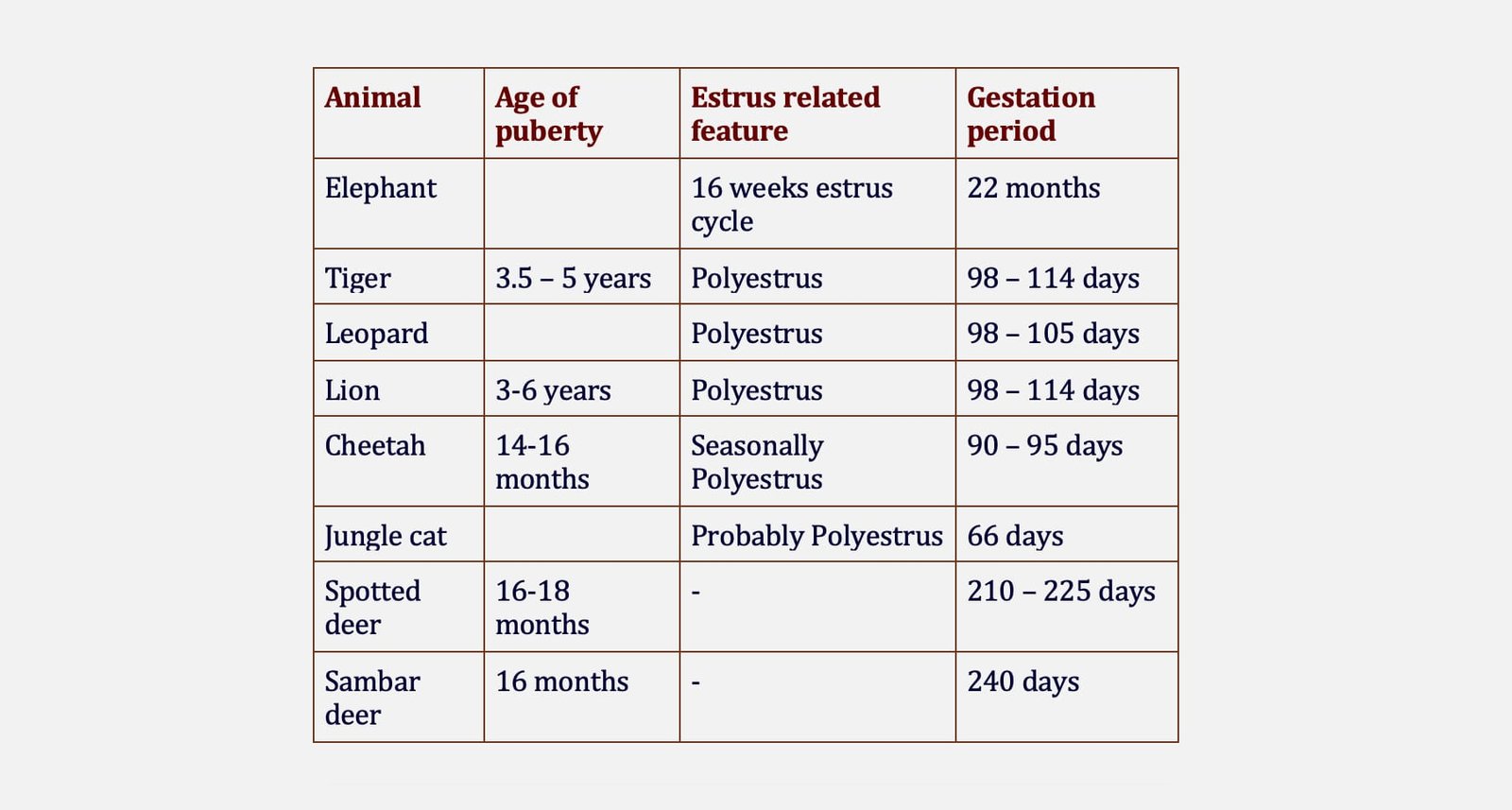Breeding and Reproduction of Zoo Animals
Breeding and Reproduction of Zoo Animals is a very important step in managing effective population and provision of resources in a controlled manner.
The effective population size may be easily estimated in captivity or in zoo due to the provision of resources in a controlled manner. Economy, availability in the concerned season or period or locality etc will assist a lot in deciding about the effective population size of the targeted wild animal species.
However in natural habitats the effective population size is to be associated with the carrying capacity of the habitat.
Carrying capacity of a habitat for a particular species may be defined as the number of individuals of that population (species) which the concerned area/habitat can carry or support during the pinch period.
Population size may be adjusted in nature by several decimating factors that are existing in the environment. Whenever species abundance is present (species exceeding the optimum numbers and density) through breeding-potential and productivity of the species, wildlife disease becomes one of the significant decimating factor in nature. Example are the occurrence of FMD, anthrax, botulism, brucellosis, rabies, distemper, haemorrhagic septicemia, black quarter etc. Similarly, predation as well as the adverse climate may lead to casualty of the species, in addition to human interference as the case with strayed wild animals, stress, starvation, movement related activities etc.
Planned Breeding of Wild Animals
This is an important feature to be taken care of during the mating of wild animals. To have a planned breeding of wild animals, one should understand the reproductive biology of the concerned wild animal species.

Breeding for Conservation of Wild Fauna
The wild animals that are found decreased in population need to be first identified and the breeding related activities are to be strengthened accordingly.
Captive Breeding
Captive populations of animals can play a significant conservation role as demographic and genetic reservoirs from which infusions of ‘new blood’ may be obtained for wild populations, as source from which new population can be found and at last redoubts for species which have no immediate chance of survival in the wild.
If the captive breeding community is to succeed in its stated education and conservation aims, it becomes important that efforts should be directed on both geographic and taxonomic basis towards area of needs.
Captive breeding institutions can play an important role in mobilizing public awareness of conservation issues and the fact that so few are located in the developing world where major species losses are expected is therefore of concern. Give adequate funding, local institutions may be better placed than overseas ones to breed and maintain native species with particular ecological requirements and to provide environmentally adapted specimens for eventual reintroduction projects.
The maintenance of viable captive population of most, if not all, threatened species should therefore be an important component of the strategy to preserve the worlds biodiversity.
Ex-situ / In-situ conservation is just one of many options open to zoo managers/wildlife managers, but often represents the only hope for species nearing extinction in the wild. However, zoos and aquaria undoubtedly have considerable capacity to preserve threatened species.
Zoo hold ex situ population assigned to highest risk categories like the endangered and the vulnerable categories. IUCN has categorized 34% of threatened mammalian taxa as Endangered and 25 % as Vulnerable. In situ conservation efforts must be increasingly focused on localities of high species diversity and endemism, while captive breeding resources must be re-allocated to the ex situ conservation of threatened taxa. Captive breeding is widely regarded as less cost effective than in situ conservation.
For captive breeding, genetic diversity is essential to know the number of animals that are necessary tot start the breeding. The population must be sufficiently large, so that the chances of complete extinction due to untimely death may be kept at the minimum. It should also be large as enough to maintain the maximum possible genetic diversity. Genetic diversity cannot be achieved by increasing the numbers alone, because many species vary in terms of sex ratio, breeding pattern, population fluctuations etc. These characteristics affect the gene pool of a population.

